Looking for a clear pepper heat chart? Here's a quick reference guide to Scoville Heat Units (SHU) for common peppers, from mild bell peppers to the world's hottest Carolina Reaper.
| Heat Level | Pepper Examples | Best For |
|---|---|---|
| Mild (0–5,000 SHU) | Bell, Poblano, Anaheim | Kids' meals, everyday cooking, mild kick |
| Medium (5,000–50,000 SHU) | Jalapeño, Serrano, Hatch | Tacos, salsas, burgers, pizza |
| Hot (50,000–100,000 SHU) | Cayenne, Thai Bird's Eye | Asian cuisine, hot sauces, adventurous eaters |
| Very Hot (100,000+ SHU) | Habanero, Ghost Pepper, Carolina Reaper | Competitions, homemade hot sauces, spice lovers |
| Pepper Type | Scoville Heat Units (SHU) | Common Use |
|---|---|---|
| Bell Pepper | 0 | Salads, stuffing, roasting |
| Poblano | 1,000–2,000 | Mole sauce, stuffed peppers |
| Jalapeño | 2,500–8,000 | Salsas, nachos, pickled dishes |
| Hatch Green Chile | 2,500–50,000 | Southwestern stews, sauces |
| Cayenne | 30,000–50,000 | Spice blends, soups, marinades |
| Thai Bird's Eye | 50,000–100,000 | Pad Thai, curries, stir-fries |
| Habanero | 100,000–350,000 | Hot sauces, salsas, flavor bombs |
| Ghost Pepper (Bhut Jolokia) | 1,000,000+ | Extreme challenges, specialty sauces |
| Carolina Reaper | 1,400,000–2,200,000 | World record holder, extreme heat |
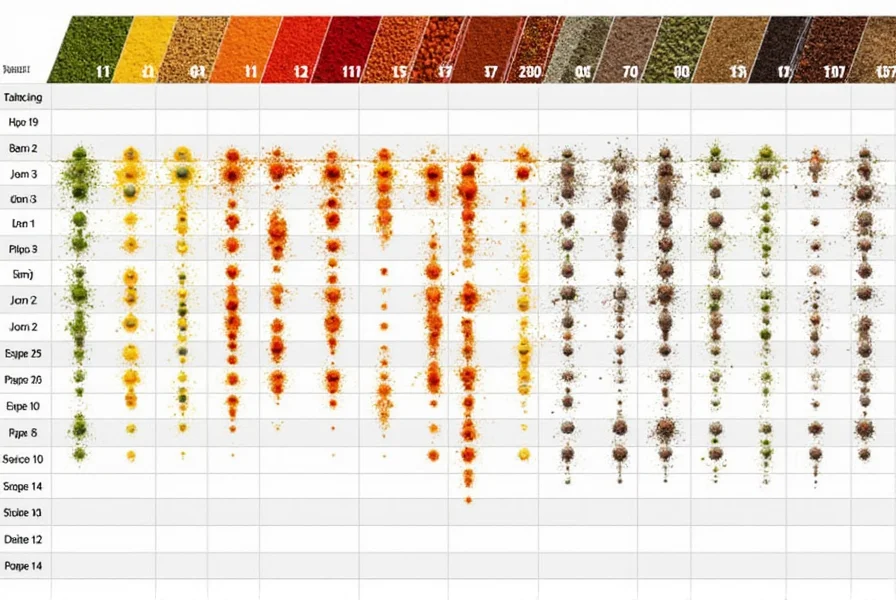
Why Do Peppers Get Hot?
Ever wonder why nature gave us peppers that burn? It's not just to test your pain tolerance — there's actually a biological reason behind it.
The compound responsible for that mouth-fire feeling is called capsaicin. Found primarily in the seeds and inner white ribs of the pepper, capsaicin binds to pain receptors in your mouth and tricks your brain into thinking something's burning — hence the fiery sensation.
- Capsaicin has no smell or taste — only heat.
- It's fat-soluble, which is why dairy helps cool the burn.
- Some studies suggest it boosts metabolism and may help reduce inflammation.
So while it might feel like punishment at first, eating spicy food can actually be good for you — in moderation, of course!
Choosing the Right Spice Level
Whether you're building a burrito bowl or trying your hand at a classic gumbo, matching the pepper to your recipe (and your palate) is key. Here's how to do it like a pro:
- Start Mild: If you're unsure about spice, begin with milder peppers like poblanos or Anaheims. You can always add heat later, but once it's in, you can't take it out.
- Remove the Seeds: A lot of the heat comes from the seeds and ribs. Removing them will significantly lower the intensity of the dish.
- Pair Wisely: Spicy doesn't have to mean overwhelming. Pair heat with cooling elements like avocado, yogurt, or lime to balance the flavors.
- Know Your Crowd: Cooking for friends or family? Ask about spice preferences before you cook — unless you want to hear a chorus of "Wow, this is really… intense."
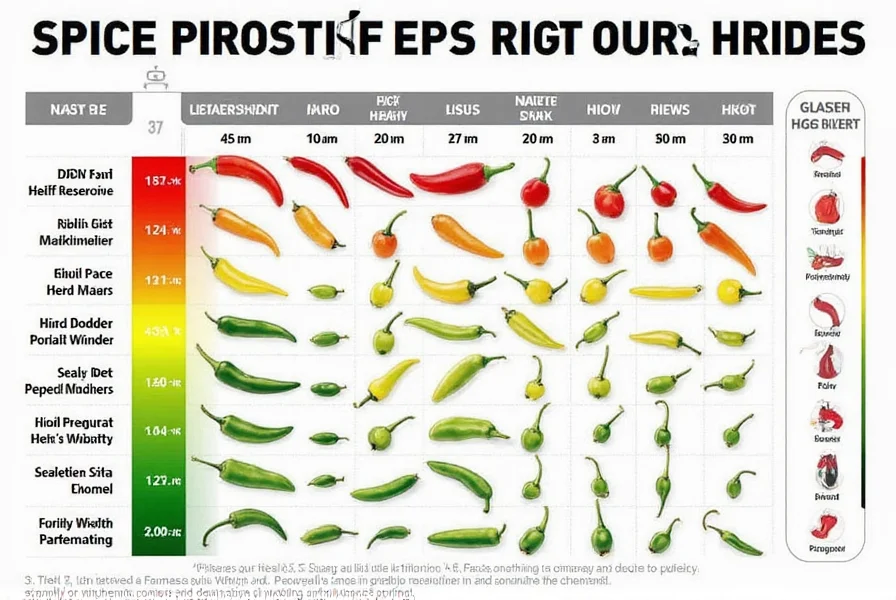
Cooking with Chili: Tips & Tricks
Ready to bring some heat into your kitchen? Here are some pro-level techniques and ideas to maximize flavor and minimize tears (from both the heat and chopping!):
- To Roast or Not to Roast: Roasting peppers (especially poblano, Anaheim, and Hatch) adds a smoky depth to your dishes. Simply char them over a flame or under the broiler, then wrap in foil to steam for easy peeling.
- Use Fresh or Dried? Dried chilies often pack more punch than their fresh counterparts and are perfect for soups, sauces, and spice rubs. Soak them in hot water before using to soften and unlock flavor.
- Infuse Oils or Vinegars: Create custom spice-infused oils or vinegars by steeping whole dried chilies in warm oil or vinegar. These make great additions to dressings or drizzles over finished dishes.
- Wear Gloves: Capsaicin sticks to your skin and can burn sensitive areas like eyes and nose. Wear gloves when handling hot peppers — especially if you're dealing with habaneros or reapers.
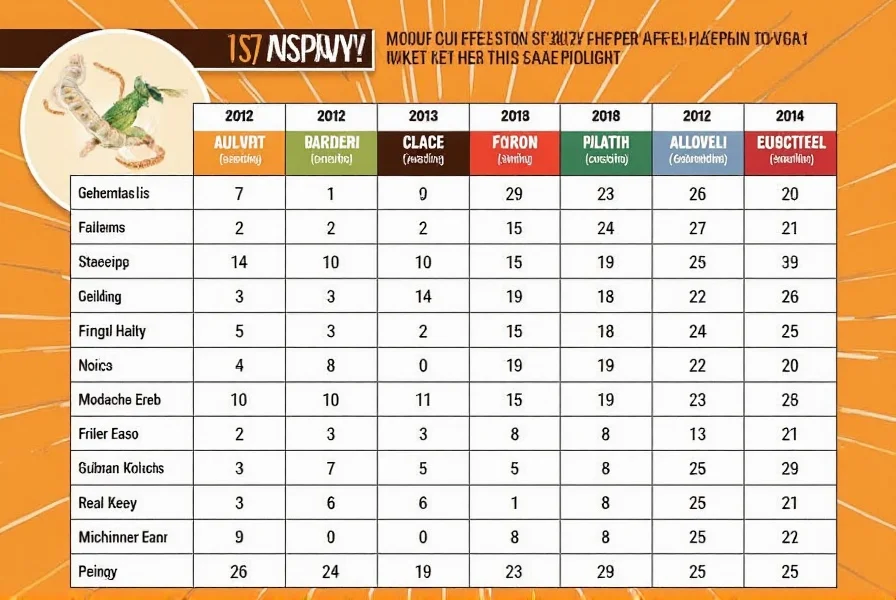
Buying Guide: Top Chili Products
Whether you're looking to build your own spice arsenal or need ready-made heat in a bottle, here are some top picks across categories:
1. Whole Dried Chilies
- Ancho (dried poblano): Mild and sweet with hints of raisin and tobacco. Ideal for mole sauces.
- Guajillo: Medium heat with berry-like notes. Perfect for marinades and adobo sauces.
- Arbol: High heat and citrusy bite. Great for salsas and toasts.
Best For: Home cooks who love making sauces, rubs, and infusions.
Recommended Brand: La Morena Dried Chile Mix Pack
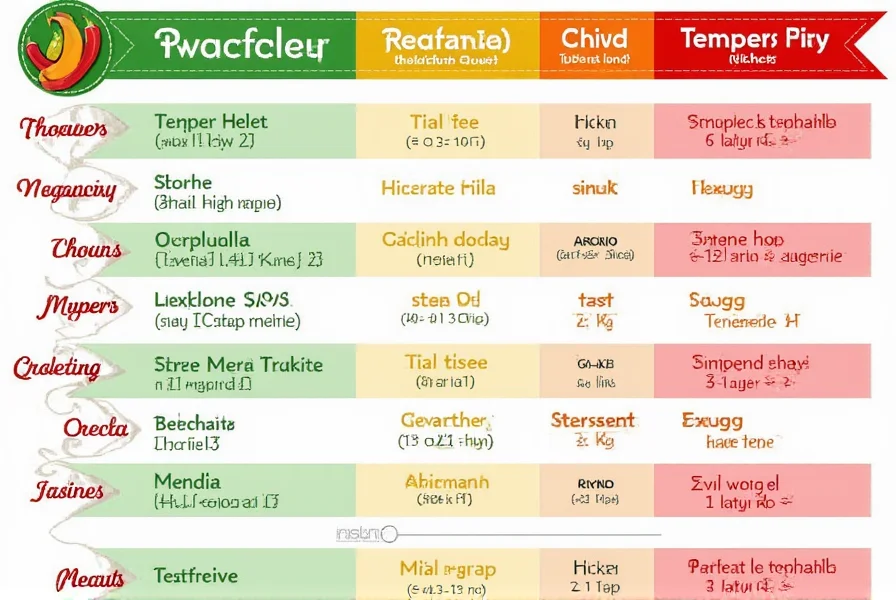
2. Fresh Chilies
- Jalapeño: Classic medium heat, versatile and easy to find.
- Hatch Green Chile: Seasonal favorite with smoky, rich flavor and moderate spice.
- Shishito: Mostly mild with occasional surprises — 1 in 10 burns hotter. Fun grilled appetizer.
Best For: Stir-frying, grilling, tacos, and garnishing.
Tip: Look for firm, shiny peppers without wrinkles or soft spots.
3. Hot Sauces
- Tabasco Original Red: Balanced heat and tang, perfect for everyday use.
- Cholula Original: Rich flavor with less vinegar bite; great on eggs and tacos.
- Pain is Good Reaper Sauce: Extreme heat with depth of flavor; handle with care.
Best For: Instant heat boost in any dish — sandwiches, soups, eggs, you name it.
Occasion Match: Mild sauces for brunch, extra hot ones for game nights.
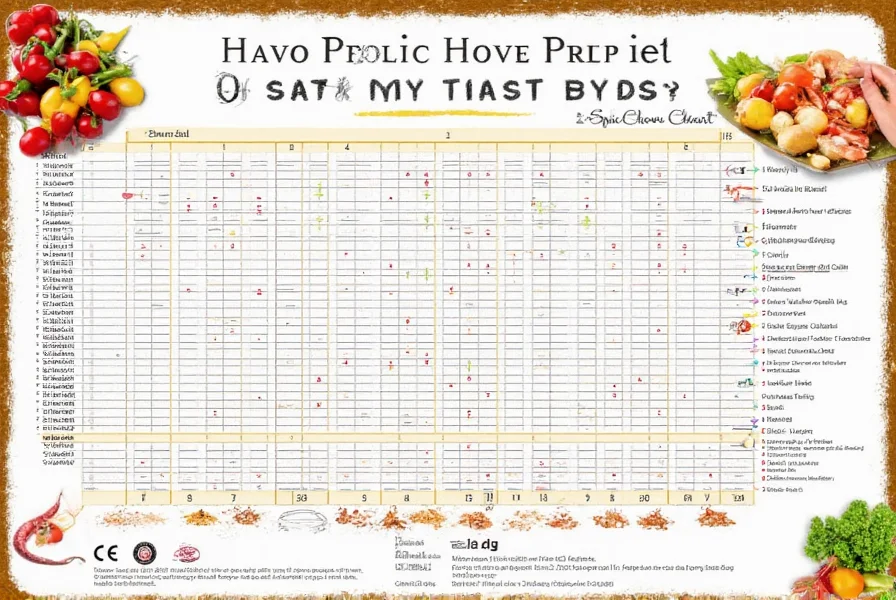
4. Spice Blends & Rubs
- Adobo Seasoning: Smoky, garlicky, and mildly spicy. Excellent on meats and veggies.
- Chili Powder (Texas Style): A must-have for chili con carne lovers.
- Harissa Paste: North African blend with roasted red pepper and spices; bold and complex.
Best For: Grilling, slow cooking, or adding depth to vegetarian dishes.
Frequently Asked Questions About Pepper Heat Charts
What is the mildest pepper on the Scoville scale?
Bell peppers are the mildest on the Scoville scale, registering at 0 Scoville Heat Units (SHU). They contain no capsaicin, the compound that creates heat in peppers. Other mild peppers include poblanos (1,000-2,000 SHU) and Anaheims (500-2,500 SHU), which provide subtle warmth without overwhelming heat.
How do I read a pepper heat chart?
Pepper heat charts typically organize peppers by their Scoville Heat Units (SHU), which measure capsaicin concentration. Charts often categorize peppers into heat levels (mild, medium, hot, very hot). To read one effectively, find your preferred heat level first, then identify peppers within that range. Pay attention to the SHU range rather than a single number, as heat can vary based on growing conditions.
What's the difference between Scoville units and pepper heat?
Scoville units (SHU) are the measurement system for pepper heat. The higher the SHU number, the hotter the pepper. Pepper heat itself refers to the sensation caused by capsaicin interacting with pain receptors. The Scoville scale quantifies this subjective experience into an objective measurement that allows for comparison between different peppers.
Can I substitute one pepper for another based on the heat chart?
Yes, heat charts are excellent guides for substitutions. If a recipe calls for a habanero (100,000-350,000 SHU) but you want less heat, you could use a serrano (10,000-23,000 SHU) or even a jalapeño (2,500-8,000 SHU). Remember that different peppers also have unique flavor profiles beyond just heat, so consider both heat level and flavor when substituting.
Why are some jalapeños hotter than others?
Jalapeño heat varies due to several factors including growing conditions (more stress = more capsaicin), maturity (redder jalapeños are often hotter), and genetics. The same plant can produce peppers with different heat levels. On the Scoville scale, jalapeños range from 2,500-8,000 SHU, which explains why some might feel significantly hotter than others.
How can I reduce the heat of a pepper?
To reduce pepper heat: 1) Remove seeds and white membranes (placenta) where most capsaicin concentrates, 2) Soak sliced peppers in vinegar or lemon juice, 3) Cook peppers thoroughly (heat breaks down some capsaicin), 4) Pair with dairy products when serving. Remember that once capsaicin is released into a dish, you can't remove it completely - prevention is better than cure!
What's the hottest pepper in the world?
As of current records, the Carolina Reaper holds the title of world's hottest pepper, ranging from 1,400,000 to 2,200,000 Scoville Heat Units. It was officially recognized by Guinness World Records in 2013. Prior to the Reaper, the Ghost Pepper (Bhut Jolokia) held the record at around 1,000,000+ SHU.
Does cooking affect pepper heat levels?
Yes, cooking affects pepper heat in complex ways. Initially, heat can intensify as cooking releases more capsaicin. However, prolonged cooking (especially with acids like tomatoes or vinegar) can break down capsaicin over time, slightly reducing overall heat. Roasting peppers can also change their flavor profile while maintaining similar heat levels. The method matters: dry heat vs. wet heat produces different results.
How accurate are Scoville scale measurements?
Modern Scoville measurements using HPLC (high-performance liquid chromatography) are quite accurate, measuring actual capsaicinoid content. However, natural variation means a single pepper type can have a wide SHU range. Factors like growing conditions, soil, climate, and even position on the plant affect heat. The Scoville numbers represent averages or typical ranges, not absolute values for every individual pepper.
What's the best way to handle extremely hot peppers safely?
When handling super-hot peppers: 1) Wear nitrile gloves (latex won't protect you), 2) Work in a well-ventilated area (capsaicin vapors can irritate eyes/lungs), 3) Avoid touching your face, 4) Clean all surfaces thoroughly afterward, 5) Have dairy products nearby for accidental contact. Never use bare hands with peppers over 100,000 SHU, and consider using kitchen tools instead of fingers to handle them.
Conclusion
Understanding the Scoville Scale chart isn't just about avoiding tear-filled dinner moments — it's about unlocking flavor, enhancing meals, and finding your personal spice sweet spot. Whether you're team 'mild and mellow' or 'bring on the burn', there's a chili out there that's just right for you.
So next time you reach for that jalapeño or dare to touch a ghost pepper, remember: heat is power. But with great power comes the responsibility to keep a glass of milk nearby.
Stay spicy, stay smart, and most of all — enjoy every bite!

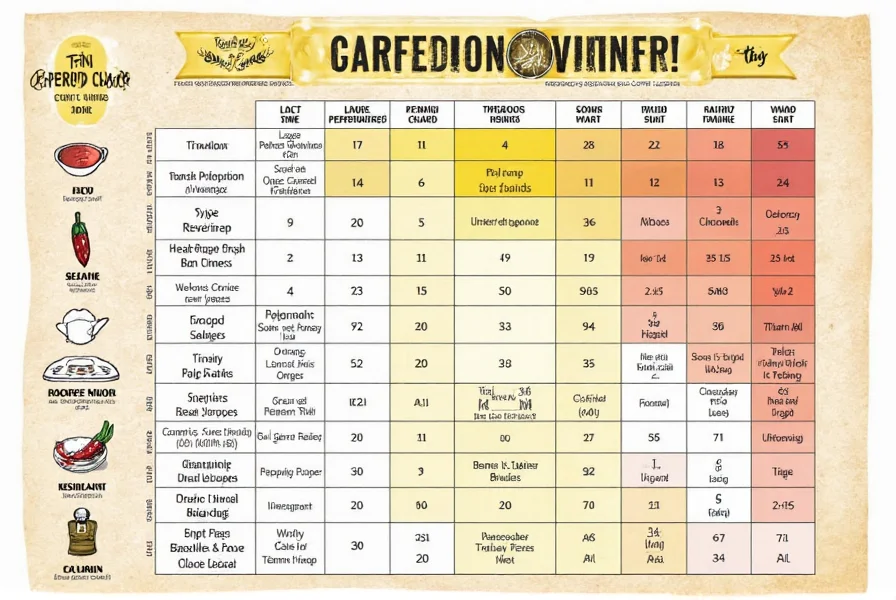

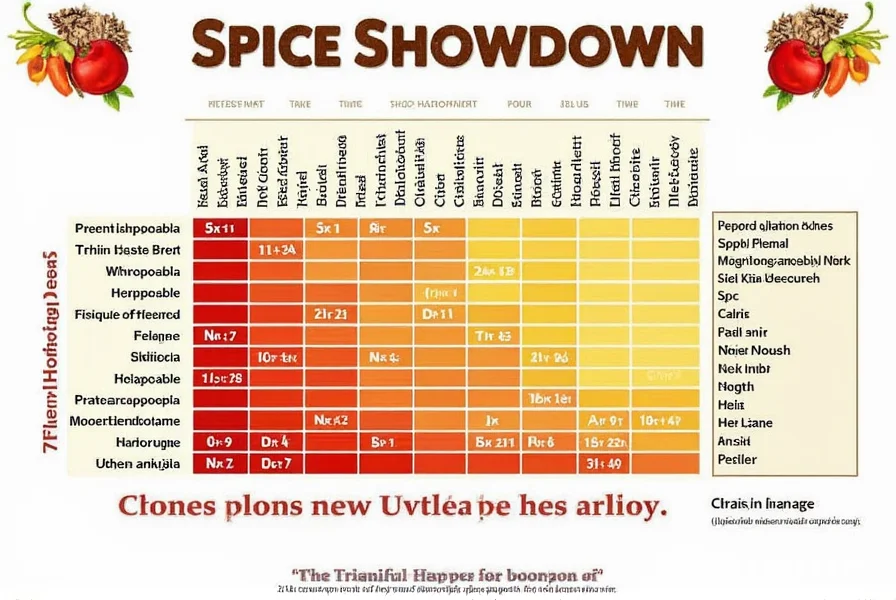









 浙公网安备
33010002000092号
浙公网安备
33010002000092号 浙B2-20120091-4
浙B2-20120091-4